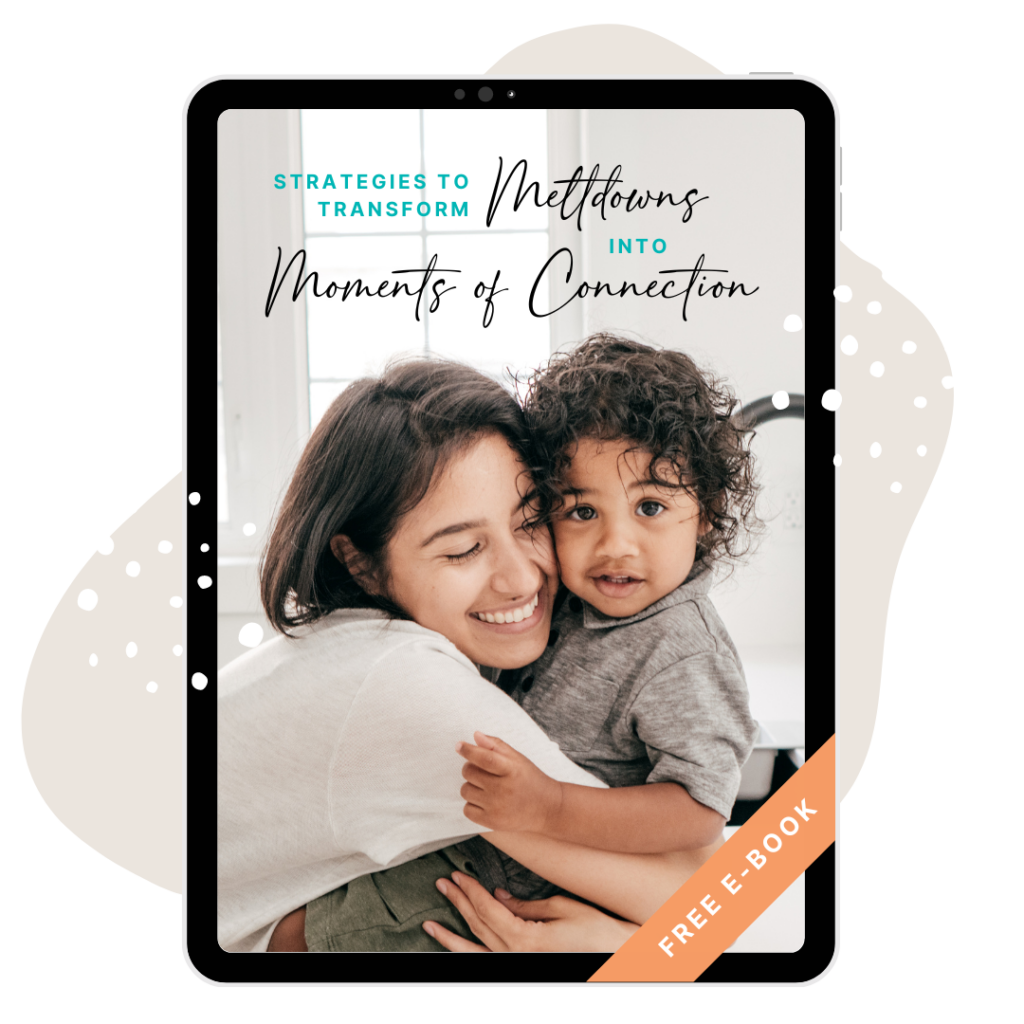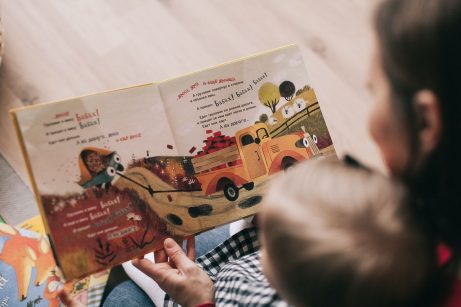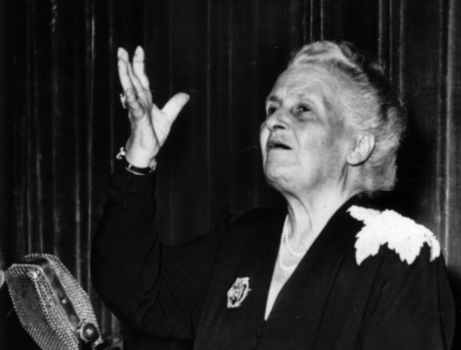Developmental Crises

Have you come across the term “Developmental Crises” in Montessori? Although it may sound alarming, it denotes an essential point in human development, and it may help give you a fresh perspective on common parenting challenges.
Although the word “crisis” is often used with a strong negative connotation, its original meaning – in the Ancient Greek krisis – is quite neutral: it literally meant “a choice”, “judgement”, or “separation”. In keeping with this etymology, in Montessori we use the phrase “Developmental Crisis” to describe points of transition throughout life. With just a bit of poetic license, we can in fact summarize human development as a series of alternating crises and plateaus – birth itself, the many challenges of childhood, but also the “adult” ones of, for example, graduation, leaving home, starting a family.
Each of these changes is celebrated by our loved ones and our community, and each is also recognized for the opportunities it brings and the challenges is encompasses. Transitions are sensitive moments: ones during which our preparation and readiness are tested. If met well, they allow us space to grow; however, they are also points of vulnerability and jeopardy, especially if our preparation was lacking and the environment unfavourable.
Naturally, in Montessori education we are most concerned with the developmental crises of childhood; and it should be no surprise that early childhood, the period of the “Psychic Embryo”, contains more developmental crises than any other. It follows our established knowledge that the course and results of early developmental crises determine the foundations of our very selves, and therefore have a massive influence on how we meet the challenges of further crises later in life.
To help you assist your child throughout these transitions, and to understand the dramatic changes and needs they face in them, below is a list of the most important developmental crises of the first plane of development.
Birth Crisis
The first and most dramatic transition is undoubtedly the birth: the newborn quite literally enters a new world, in which all of their physical preparation (the growth and development of the body) up until this moment is tested. They must immediately begin to breathe, and soon after (with the mother’s help and support) also eat and regulate their own bodily functions. At no other point of life are our physical conditions changed to anywhere near this extent.
This change must happen in order for the child to survive. However, seeing the totality of the transition, it is clear we must provide the child with all the comfort and familiarity we can. The points of reference the child has are tied to the mother: her voice, heartbeat, and breathing; to a smaller degree, there is familiarity with other family members whose voice and touch the child has known. Further, we now know that each child is born with an innate expectation to be met with human faces and is ready to immediately begin building the parent-child bond.
How can we help? The first moments, minutes and hours after the birth – which form the totality of the child’s experience of the world – should provide them with assurances of love, security and acceptance that will eventually form the basic trust in the environment. For instance, unless there is a medical emergency of some kind, the child should immediately after birth be placed on the mother’s body; parents should not be made to wait to communicate, interact and bond with the child. Nursing is, of course, not only a tool of nutrition but also of creating the relationship between mother and child – and whether the baby is breastfed or bottle-fed, it should be done with loving care and attention as this dyadic bond forms for the child a sort of template for all future relationships.
Most parents, of course, pay every attention to the newborn’s safety and comfort. However, we must also remember this is a time of first exploration, both of the environment and of the newborn’s own body. As such, we recommend that the child is allowed free movement to the extent they are able, with loose, non-restrictive clothing, especially when the child is awake and alert. Similarly, there should be a variety of pleasant and interesting things to look at and touch.

Discover practical, easy-to-implement strategies to gently navigate your child’s emotional outbursts, while maintaining your own sense of calm.
The Weaning Crisis
The weaning crisis marks a major change in the mother-infant relationship: instead of continuously relying on the mother for life, they can now meet their physical needs in their environment. This is not to say the baby no longer needs their mother – however, the bond between them shifts and is physically expressed in other ways, while both parties get to enjoy a new bodily autonomy.
How can we help? The best support parents can offer is to observe the child’s readiness to eat solids and act on it, taking advantage of the sensitive period. The next step is including the child with the family and allowing them to participate in “real” mealtimes, in ways that are culturally appropriate and correct – eating at the table, with others, rather than for instance drinking pureed food out of a bottle.
It is important to support the child’s emerging autonomy by allowing them to eat independently, without forcing food, or even persuading the child to accept it. Cajoling or pushing the child to eat sets up unhealthy models and habits that are hard to break later in life. Not coincidentally, the moment when children are physically ready to complete weaning (presuming the family doesn’t choose to pursue extended breastfeeding), comes at around nine months of age – at the end of the “external pregnancy”, which also marks the formation of the basic trust in self, and also other important developmental milestones: language comprehension, crawling and pulling up, thumb opposition, securing the concept of object permanence. Altogether, these changes result in the child’s separation from the parents into an individual establishing personal boundaries, and can be considered the point of transition from infant to a toddler.
Fear of Strangers
This can be considered a subset of the weaning crisis. As the child at this age is starting to establish personal boundaries, they begin to protest others entering their personal space without approval.
This is not a negative development and does not have to hinder the child’s relationships. All they require at this point is respect for their feelings and patience to wait for them to initiate interaction, rather than having it forced. Whilst it may be a novel concept to some to seek an infant’s permission before touching, hugging or kissing one, they are just as entitled to his own body, privacy and personal space as any other human being – and perhaps more entitled to our consideration, given the difficulty young children have in forming, expressing and defending their preferences.
“At nine months of age, children are individuals with well-defined egos. They do not tolerate being treated as objects that can be picked up and put down without any regard for their basic need to control their personal space: the space occupied by their bodies. Children love relating to, and making contact with others, but, at this age, have to give their approval for a relationship. They feel that no one can come close to them, let alone touch them, without having been given their explicit permission. Their reaction of fear and crying is fully explained by the terrible but common sensation of being at the mercy of people stronger than they are, who take advantage of this situation to impose their presence too directly.”
Sylvana Montanaro, Understanding the Human Being
The Self-Affirmation Crisis
At the age of about two years, the child enters a distinct and well-known developmental crisis, sometimes described as “opposition crisis”, or the “period of no”. However, that label is not quite accurate: the child does not desire to be in opposition, but simply needs to be recognized as an individual with their own opinions, wants and needs.
“Behind the child’s ‘no’ is a desire to be recognized as a person.”
Sylvana Montanaro, Understanding the Human Being
As the child’s ego emerges, their behaviour changes, often to the shock and dismay of the parents. The child often runs away, rejects the parents (or also favourite objects or activities), and the infamous toddler tantrums begin. Behind all of this is the need to separate oneself from the parents and to find their own personhood. Again, this does not mean the child no longer needs the parents, quite the opposite; however, they are now coming to view themselves as a separate being, as opposed to an extension of either parent, and must find ways to demonstrate themselves as such.
How can we help. The need to exercise the will can be quite easily fulfilled by being offered choices in non-confrontational situations, such as being given a selection of two to three outfits or foods to choose from. Asking the child for their opinion and help whenever possible and practical also communicates respect and regard that they desperately need from us at this point.
If there isn’t opportunity for the child’s own choice, the situation should be explained to her clearly and firmly. Part of preparing the child’s environment should be the parents’ consensus on how to handle common issues, so that the child can have as much consistency and order (and as a result, security) as possible.
It is of note that this crisis is, to a degree, repeated and recalled in adolescence. Therefore, if it is resolved very successfully in this early iteration, the adolescent (and their family) will have a much easier time of it later.
Montessori Beginnings
YOUR ULTIMATE
MONTESSORI PARENTING COURSE
FOR ZERO TO THREE
Gain clarity and confidence in your parenting to raise a resilient, independent and joyful child.


